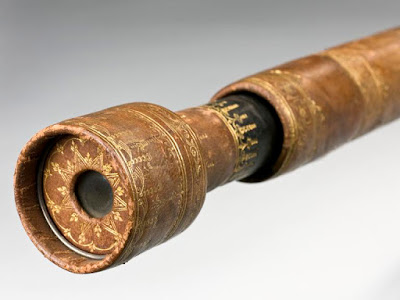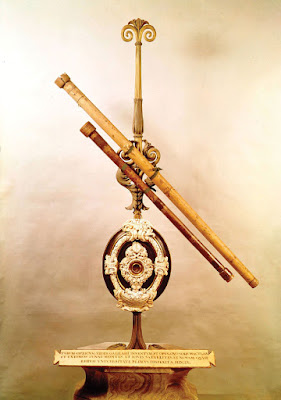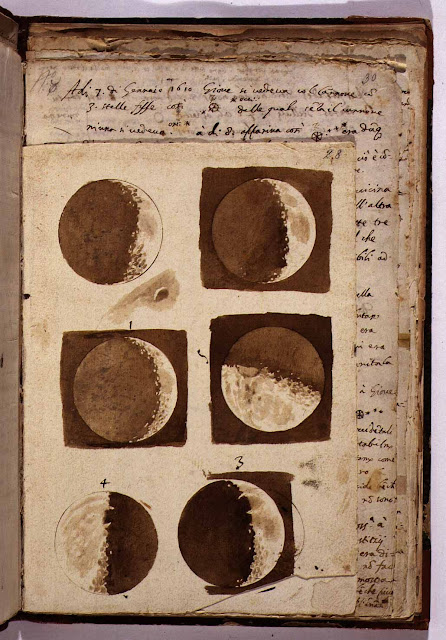
The invention of the telescope played an important role in advancing our understanding of Earth’s place in the cosmos. While there is evidence that the principals of telescopes were known in the late 16th century, the first telescopes were created in the Netherlands in 1608. Spectacle makers Hans Lippershey & Zacharias Janssen and Jacob Metius independently created telescopes. The telescope emerged from a tradition of craftsmanship and technical innovation around spectacles and developments in the science of optics traced back through Roger Bacon and a series of Islamic scientists, in particular Al-Kindi (c. 801–873), Ibn Sahl (c. 940-1000) and Ibn al-Haytham (965–1040).
Early telescopes were primarily used for making Earth-bound observations, such as surveying and military tactics. Galileo Galilei (1564-1642) was part of a small group of astronomers who turned telescopes towards the heavens. After hearing about the “Danish perspective glass” in 1609, Galileo constructed his own telescope. He subsequently demonstrated the telescope in Venice. His demonstration of the telescope earned him a lifetime lectureship.
After his initial success, Galileo focused on refining the instrument. The initial telescope he created (and the Dutch ones it was based on) magnified objects three diameters. That is, it made things look three times larger than they did with the naked eye. Through refining the design of the telescope he developed an instrument that could magnify eight times, and eventually thirty times.

This increased magnification of heavenly objects had a significant and immediate impact. These new observations were by no means exclusive to Galileo. The story of Galileo and the telescope is a powerful example of the key role that technologies play in enabling advances in scientific knowledge. With that said, the telescope isn’t the only technology at play in this story. Galileo deftly used the printed book and the design of prints in his books to present his research to the learned community. This is not a story of a lone thinker theorizing and piecing together a new model of the cosmos. Quite the contrary, an array of individuals in the early 17th century took the newly created telescopes and pointed them toward the heavens. Unlike those other observers, however, Galileo rapidly published his findings. In some cases, Galileo understood the significance and importance of these observations more readily than his contemporaries. It was this understanding, and foresight to publish, that made Galileo’s ideas stand the test of time.
Galileo also produced this extremely famous set of six watercolours of the Moon in its various phases “from life”, as he observed the Earth’s satellite through a telescope in the autumn of 1609. They represent the first realistic depiction of the Moon in history.






